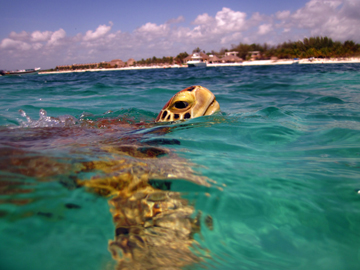
Credit: Melissa Normann
Focusing on species, ecosystems, and emerging and cross cutting issues worldwide, the Wildlife Without Borders - Global Program seeks to ensure international cooperation to conserve habitats and endangered species.
The Global Branch focuses on international treaties and conventions; partnerships; cross cutting and emerging issues; communications; and grant programs.
Specific examples include the Convention on Wetlands of International Importance (Ramsar Convention), the Western Hemisphere Migratory Species Initiative, Amphibians in Decline Fund, and the Critically Endangered Animals Conservation Fund, among others.
The Global Branch partners with federal agencies, non-government organizations, private sector corporations, and philanthropic institutions, multilateral agencies, and other entities to align priorities for international wildlife conservation and societal impact and to leverage collaborative efforts.
Grant programs include the Critically Endangered Animals Conservation Fund, which aims to protect mammals, birds and reptiles outside of the United States that face immediate threats of extinction due to severe population declines; and Amphibians in Decline, a fund designed to conserve rapidly disappearing amphibian species.
Cross-cutting issues across the Division of International Conservation address human-wildlife conflicts, climate change, wildlife disease, and special projects.
“The Global Program of the Division of International Conservation recognizes that species do not recognize political boundaries and that many of the threats and opportunities to save vanishing species also cross borders. Our program attempts to create synergies and build bridges to enhance our worldwide efforts to save our natural resources before it is too late.”
-- Krishna K. Roy, Branch Chief of the Global Program.





